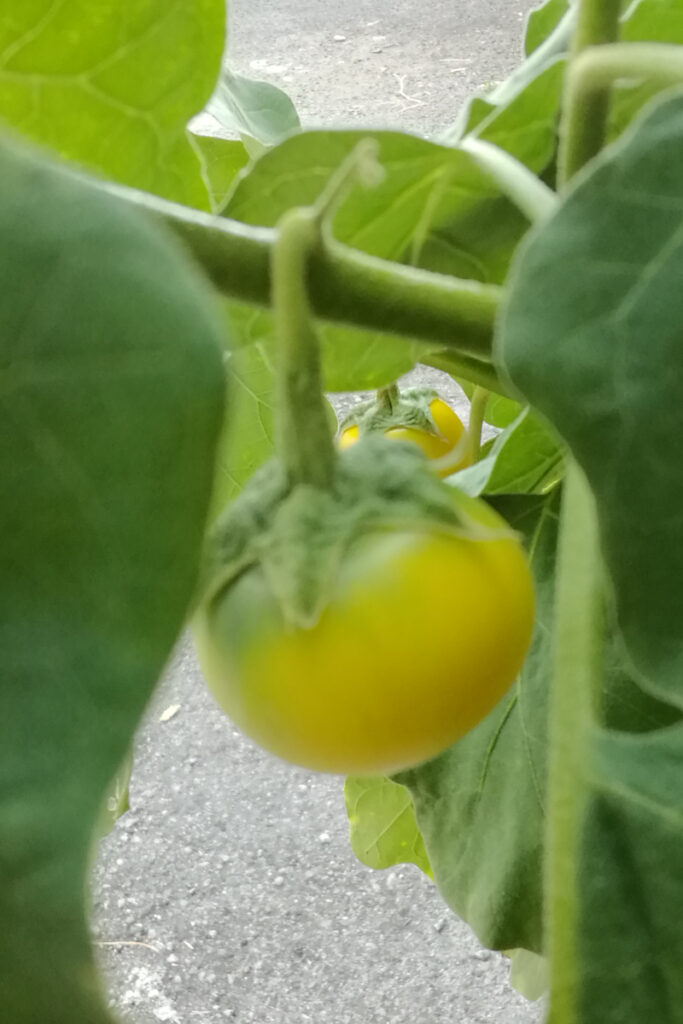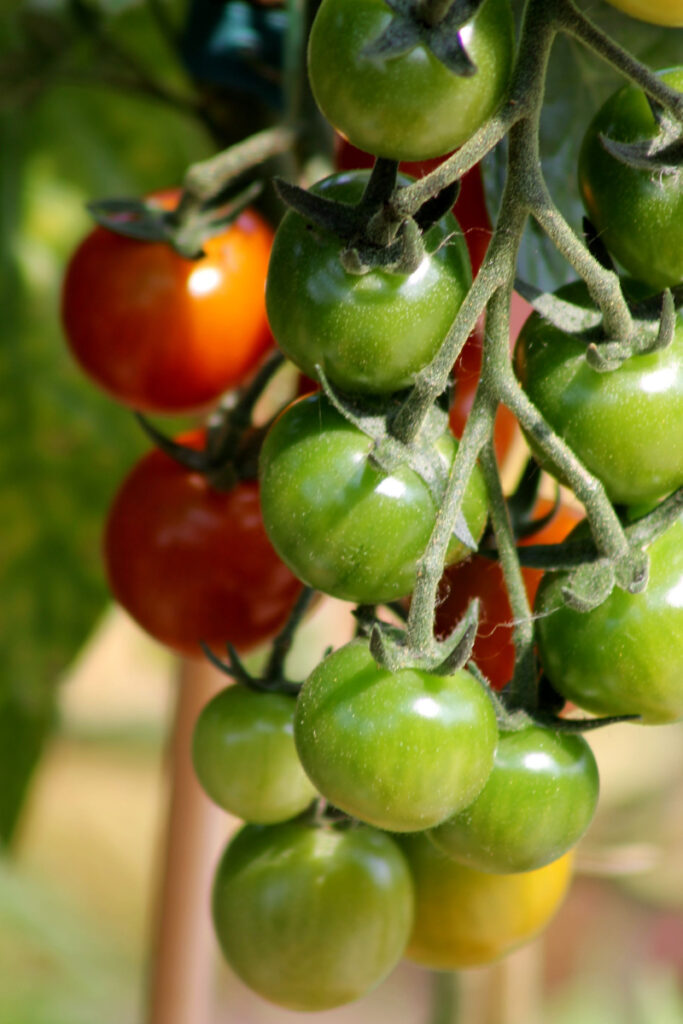Growing Rapunzel Tomatoes: Learn the Secrets
Welcome to the magical world of Rapunzel tomatoes! If you’re a passionate gardener or simply a tomato enthusiast looking to grow something unique in your garden, you’ve come to the right place.
In this guide, I’ll share my secrets on how to successfully grow Rapunzel tomatoes and enjoy their remarkable taste and appearance.
Rapunzel tomatoes are a hybrid variety that boasts long, cascading trusses of sweet, cherry-sized fruits. Named after the famous fairy tale character, these tomatoes resemble Rapunzel’s flowing locks as they dangle gracefully from the vines.
Not only do they make a stunning addition to any garden, but they also offer an abundance of delicious, bite-sized fruits perfect for salads, snacking, or simply admiring.
Growing Rapunzel tomatoes can be a rewarding experience if you follow the right steps and provide the plants with the care they need. So, let’s embark on this exciting journey together and unlock the secrets to growing Rapunzel tomatoes!

Choosing the Right Location
Just like any other plant, Rapunzel tomatoes require a suitable environment to thrive and produce an abundant harvest. Paying attention to their specific needs will ensure healthy growth and help you avoid common pitfalls. Here are some key factors to consider when selecting the perfect spot for your Rapunzel tomatoes:
Sunlight Requirements
Rapunzel tomatoes, like most tomato varieties, love the sun. They need at least 6-8 hours of direct sunlight each day to grow strong and healthy.
Make sure to choose a location in your garden that receives plenty of sunshine throughout the day. If you have limited space or live in an area with less sunlight, you can still grow Rapunzel tomatoes in containers and move them around to catch the sun’s rays.
Soil Type and Drainage
Good drainage is essential for the successful growth of Rapunzel tomatoes. They prefer well-draining soil that is rich in organic matter.
If your garden has heavy clay soil or poor drainage, consider amending it with compost or other organic materials to improve its structure. Alternatively, you can grow your tomatoes in raised beds or containers filled with a high-quality potting mix.
Protection from Wind and Pests
Although Rapunzel tomatoes are relatively sturdy plants, they can be susceptible to damage from strong winds and pests. Choose a location that offers some protection from harsh winds, such as near a fence or wall.
Additionally, keep an eye out for common tomato pests like aphids, whiteflies, and hornworms, and take appropriate measures to protect your plants from these unwanted visitors.
Preparing the Soil
Before you plant your Rapunzel tomato seeds, it’s crucial to prepare the soil to create a nurturing environment for your plants. Proper soil preparation can make all the difference in the health and productivity of your tomato plants. Here are some essential steps to follow:
Soil Testing and Amendment
Start by testing the soil in your selected location. You can use a simple home testing kit or send a sample to a local extension service for analysis. This will help you determine the soil’s pH level and nutrient content.
Rapunzel tomatoes prefer slightly acidic soil with a pH between 6.0 and 6.8. If your soil is too acidic or alkaline, you can amend it with lime or sulfur, respectively, to achieve the desired pH level.
Choosing the Right Fertilizer
In addition to adjusting the soil pH, you may need to add nutrients to the soil to support healthy growth. Rapunzel tomatoes benefit from a balanced fertilizer that provides essential nutrients like nitrogen, phosphorus, and potassium.
Look for a fertilizer specifically designed for tomatoes or one with a balanced N-P-K ratio, such as 10-10-10 or 5-5-5. Apply the fertilizer according to the package instructions, and incorporate it into the soil before planting.
The Importance of Soil pH and How to Adjust It
As mentioned earlier, Rapunzel tomatoes prefer slightly acidic soil with a pH between 6.0 and 6.8. A proper pH level ensures that your plants can effectively absorb the nutrients they need to grow strong and healthy.
If your soil’s pH is outside of this range, you can amend it with lime (to raise the pH) or sulfur (to lower the pH). Follow the instructions on the product packaging and retest the soil after amending to ensure you’ve achieved the desired pH level.
Planting the Seeds
Now that your soil is prepared, it’s time to plant your Rapunzel tomato seeds. Proper planting techniques will set the stage for strong, healthy plants and an abundant harvest. Here are some essential tips for planting your Rapunzel tomato seeds:
Starting Seeds Indoors vs. Outdoor Seeding
Rapunzel tomatoes can be started either indoors or directly in the garden, depending on your climate and growing season. If you live in an area with a short growing season, it’s best to start your seeds indoors 6-8 weeks before the last expected frost date.
This will give your plants a head start and ensure they have enough time to mature and produce fruit. To start seeds indoors, plant them in seed trays or small pots filled with a well-draining seed-starting mix. Place the trays in a warm, sunny location or use a grow light to provide adequate light.
Timing Considerations
If you prefer to sow your seeds directly in the garden, wait until the soil has warmed up and the danger of frost has passed. Rapunzel tomatoes are sensitive to cold temperatures and can be damaged or killed by frost. As a general rule, plant your seeds outdoors when nighttime temperatures consistently stay above 50°F (10°C).
Seed Depth and Spacing
When planting your Rapunzel tomato seeds, space them about 2-3 feet apart to give the plants plenty of room to grow and spread out. Sow the seeds about ¼ inch deep in the soil and cover them lightly with soil or compost. Keep the soil consistently moist but not waterlogged until the seeds germinate, which typically takes 7-14 days.
Proper Watering Techniques
Watering is a critical aspect of growing healthy and productive Rapunzel tomato plants. Providing the right amount of water at the right time can significantly impact the growth and fruit production of your plants. Here are some essential tips for properly watering your Rapunzel tomatoes:
Water Requirements
Rapunzel tomatoes, like all tomato varieties, require consistent and deep watering to thrive. Generally, tomato plants need about 1-2 inches of water per week, depending on factors like temperature, humidity, and soil type. During hot and dry periods, you may need to increase the frequency of watering to prevent wilting and stress.
Avoiding Over-Watering and Under-Watering
Both over-watering and under-watering can cause problems for your Rapunzel tomato plants. Over-watering can lead to root rot, fungal diseases, and reduced fruit quality, while under-watering can result in poor fruit production and increased susceptibility to pests and diseases.
To strike the right balance, water your plants deeply and consistently, allowing the soil to dry slightly between waterings. A good rule of thumb is to water the plants when the top 1-2 inches of soil feel dry to the touch.
Effective Watering Techniques for Healthy Growth
The way you water your Rapunzel tomatoes can also impact their health and productivity. To promote strong root development and reduce the risk of disease, water your plants at the base rather than spraying the leaves and stems.
This can be done using a soaker hose, drip irrigation system, or by hand with a watering can. Watering in the early morning or late afternoon will minimize evaporation and help the plants make the most of the moisture.
Supporting and Pruning Your Plants

As your Rapunzel tomato plants grow, it’s essential to provide proper support and pruning to ensure healthy growth and a bountiful harvest.
Supporting your plants helps prevent them from falling over due to their weight, while pruning encourages better air circulation and sunlight penetration. Here are some important tips for supporting and pruning your Rapunzel tomatoes:
Choosing the Right Support
There are several support options available for your Rapunzel tomato plants, including cages, stakes, and trellises. Choose a support method that suits your garden space and personal preferences.
For example, tomato cages are easy to set up and provide good support for smaller plants, while stakes or trellises work well for taller, more vigorous varieties like Rapunzel tomatoes. Whichever support method you choose, make sure it’s sturdy enough to support the weight of the plant and its fruit.
Installing Supports Early
Install your chosen support system early in the growing season, ideally when you transplant your seedlings or shortly after they have been planted in the ground. This will prevent damage to the plant’s roots and make it easier to train the plant to grow upwards as it develops.
Training Your Plants
As your Rapunzel tomato plants grow, gently guide them to climb their support structure by loosely tying the main stem to the support using soft twine or plant ties.
Be careful not to tie the stems too tightly, as this can restrict growth and cause damage to the plant. Continue to train your plants as they grow, ensuring they remain supported and off the ground.
Pruning for Optimal Growth
Pruning your Rapunzel tomato plants can help improve air circulation, reduce disease risk, and encourage better fruit production.
To prune your plants, remove any suckers — the small shoots that grow in the joint between the main stem and a branch — by pinching them off with your fingers or using a pair of clean, sharp pruning shears. You can also remove any yellowing or damaged leaves to maintain the plant’s overall health.
Harvesting and Storing Your Rapunzel Tomatoes
After months of careful nurturing, your Rapunzel tomato plants will begin to produce fruit, and it’s time to enjoy the fruits of your labor.
Knowing when and how to harvest your tomatoes will ensure that you get the best flavor and quality from your homegrown produce. Here are some essential tips for harvesting and storing your Rapunzel tomatoes:
Recognizing Ripeness
Rapunzel tomatoes are ready to harvest when they have reached their full size and color, usually a vibrant red or deep orange, depending on the specific variety.
The fruit should feel firm but slightly tender to the touch, and the skin should be smooth and glossy. It’s important to wait until the tomatoes are fully ripe before harvesting, as this will ensure the best flavor and texture.
Harvesting Techniques
To harvest your Rapunzel tomatoes, gently grasp the fruit in your hand and twist it slightly until it detaches from the vine. Be careful not to squeeze or bruise the fruit, as this can cause damage and reduce its shelf life.
You can use a pair of clean, sharp scissors or pruning shears to cut the stem if the fruit is difficult to remove by hand.
Storing Your Tomatoes
After harvesting, store your Rapunzel tomatoes at room temperature, away from direct sunlight. Avoid refrigerating your tomatoes, as this can cause them to become mealy and lose their flavor. Properly stored, fresh tomatoes can last up to a week or more, depending on their ripeness and the ambient temperature.
Preserving Your Harvest
If you have an abundance of Rapunzel tomatoes, you may want to consider preserving them to enjoy later. Canning, freezing, and drying are popular methods for preserving tomatoes and maintaining their flavor for future use. Be sure to follow proper preservation techniques to ensure the safety and quality of your preserved tomatoes.
Interested in Growing Your Own Tomatoes?
Growing tomatoes is a rewarding and enjoyable experience that can be done by anyone, whether you’re a gardening novice or an experienced grower. With the right growing conditions and proper care, you’ll soon have an abundance of fresh, juicy tomatoes to enjoy.
Here in this blog, we also cover different varieties of tomatoes and how to grow them, as well as delicious recipes for all the tomatoes you’ll be harvesting:
- Husky Cherry Red Tomatoes
- Grow Tomato Upside-Down
- How to Grow Early Girl Tomatoes
- And so much more